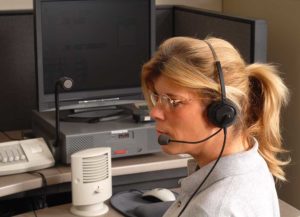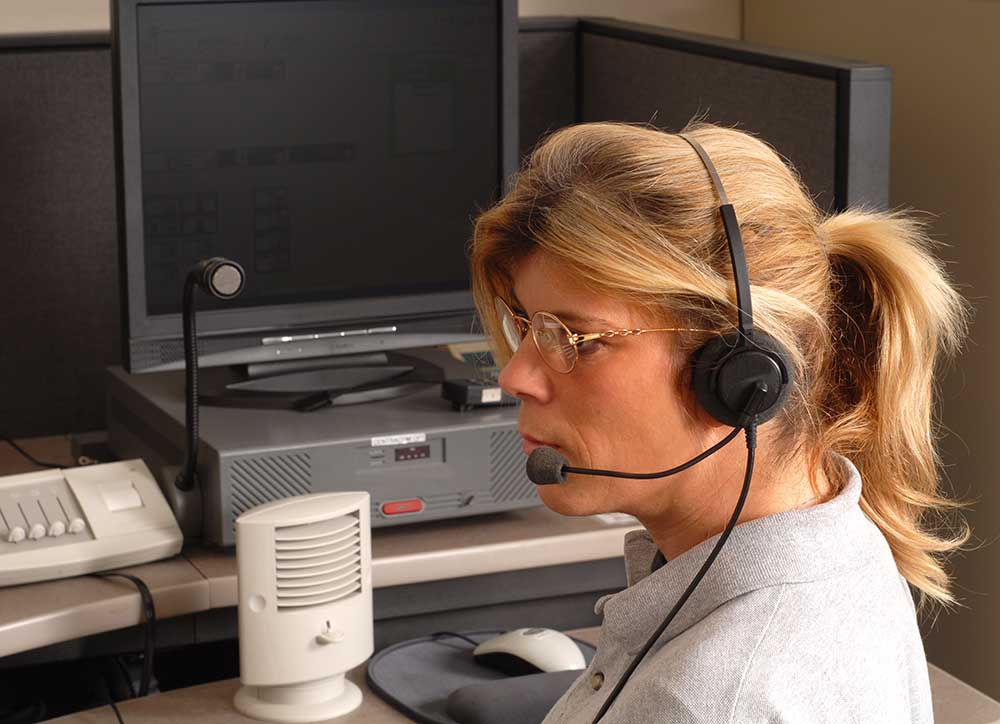Disclaimer: The information on our website is provided for general information purposes only. We make no representations or warranties of any kind, express or implied, about the completeness, accuracy, reliability, suitability or availability with respect to the website or the information contained on our website for any purpose. Any reliance on such information is therefore strictly at your own risk and we are not liable for any damages or losses arising out of or resulting from your reliance on any information contained on our website.
Police, fire, and ambulance dispatchers answer calls for emergency and non-emergency situations. They respond to requests from people who need help from firefighters, police, emergency services, or a combination of the three. Emergency dispatchers primary responsibility is to coordinate the response team and instruct the caller while waiting for help. Watch a video to learn what an emergency dispatcher does:
How to Become an Emergency Dispatcher

The minimum requirement for police, fire, and ambulance dispatchers is a high school diploma or equivalent. Employers also often require a typing test, drug tests, lie detector tests, hearing and vision screening, and a background test. Most states require proof of U.S. citizenship and sometimes a valid driver’s license. Also, more than often, certifications and training are required by the state you reside in. Check out the Association of Public-Safety Communications Officials (APCO International) for your state’s requirements. Some employers use their own programs for certification, while others may use a professional association to develop their trainings.
These associations include the Association of Public-Safety Communications Officials (APCO International), the National Emergency Number Association (NENA), and the International Academies of Emergency Dispatch (IAED). All of these associations have standards that can be used as a guideline for training programs. Although training is often conducted in a classroom and on-the-job, it is followed by a 1-year probationary period. Additionally, training covers a wide range of topics like dispatch systems, standard procedures, agency protocols, and local geography. Dispatchers also receive training in high-risk situations like suicidal callers and child abductions. APCO also has an Emergency Medical Dispatcher (EMD) certification, which enables dispatchers to give medical assistance over the phone, which may be required while help is on the way.
Job Description of a Police, Fire, and Ambulance Dispatcher
Police, fire, and ambulance dispatchers primary responsibility is to facilitate emergency services and answer emergency, and non-emergency calls. They determine what type of crisis it is, the emergency location, and send the appropriate response based on agency procedures. They must communicate precise information to the appropriate first-responder agency and coordinate emergency response personnel’s dispatch to accident scenes or appropriate locations.
Dispatchers give basic over-the-phone medical instructions when necessary before emergency personnel arrive on the scene. They also provide advice to callers on how best to remain safe while waiting for assistance. They often monitor and track the states fire, police, and ambulance units and synchronize responses with other area communication centers when necessary. All dispatchers must document and record detailed information on all calls received. Data is collected by phone and logged on a computer—essential facts, such as the nature of the incident, the caller’s name, and location.
Dispatchers typically work full time; however, they often work 8-12 shifts in addition to overtime. Hours fluctuate from days, weekends, nights, and include holidays. They work indoors in communication centers, often called public safety answering points (PSAPs). There are also unified communication centers, where dispatchers answer calls for all types of emergency services. However, others work directly for police or fire departments.
Working as an emergency dispatcher can be demanding and stressful. You often work long shifts, take many calls, and deal with scary and potentially life-threatening situations. The high demands can be exhausting, however, rewarding as well. You must respond quickly and as calmly as possible. Problem-solving, critical thinking, and excellent communication skills are essential to be an effective dispatcher.
Dispatcher Career Video Transcript
In an emergency, when a 9-1-1 call is made, emergency dispatchers keep a cool head to ensure that callers get the help they need while providing a reassuring presence over the phone. Police, fire, and ambulance dispatchers answer emergency and nonemergency calls. They quickly determine the type of emergency, its location and the response needed, then relay that information to the appropriate emergency responders. They also give medical instructions or advice on how to stay safe until help arrives.
Dispatchers monitor and track emergency vehicles, coordinate responses with other local communication centers, and keep detailed records of calls. Dispatch work is stressful. Dispatchers often work long shifts taking many calls under pressure to respond quickly and calmly sometimes handling life-threatening situations. Most work for local government, in centers, called public safety answering points. Some work in law enforcement agencies and fire departments. Shifts include weekends, evenings and holidays. Dispatchers generally need a high school diploma, U.S. citizenship, and dispatcher certification. Candidates may be required to pass a typing test, background check, drug tests, lie detector, and hearing and vision tests. Spanish language skills are a plus.
Article Citations
Bureau of Labor Statistics, U.S. Department of Labor, Occupational Outlook Handbook, Police, Fire, and Ambulance Dispatchers.
National Center for O*NET Development. 43-5031.00. O*NET OnLine.

